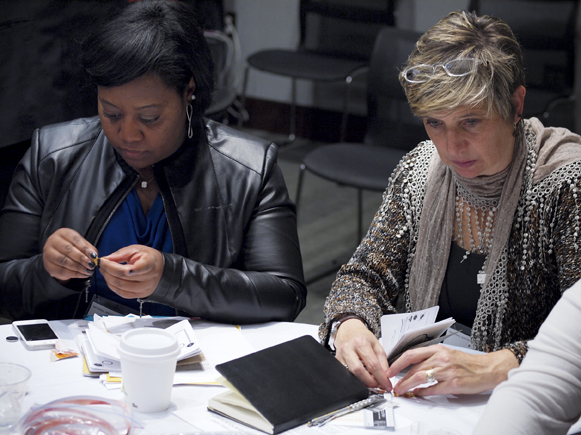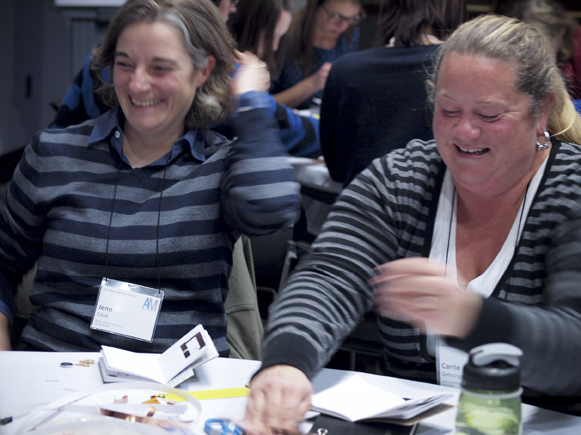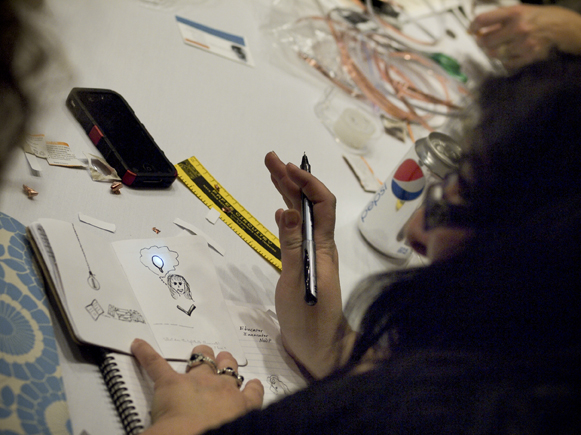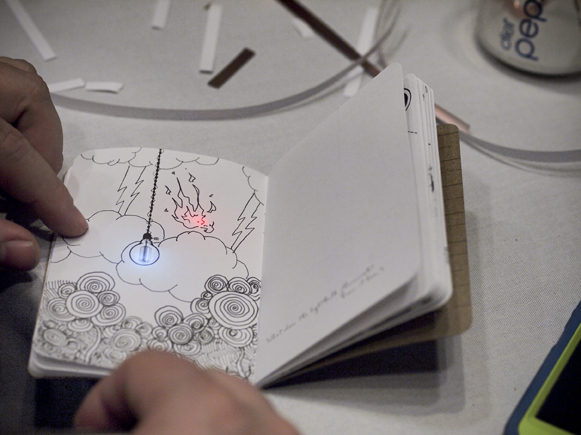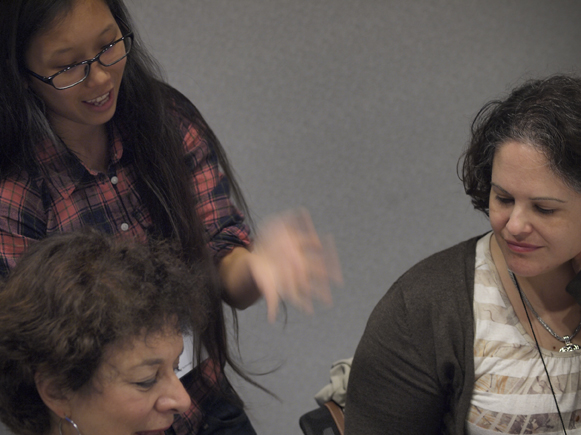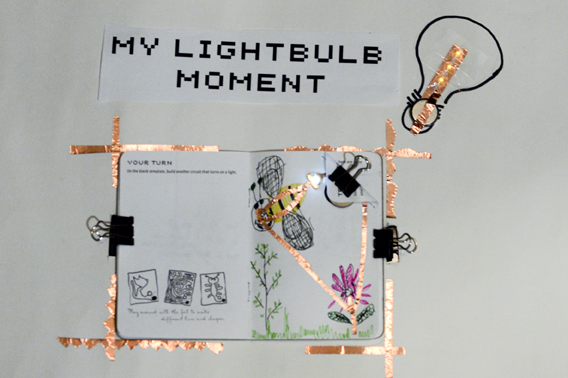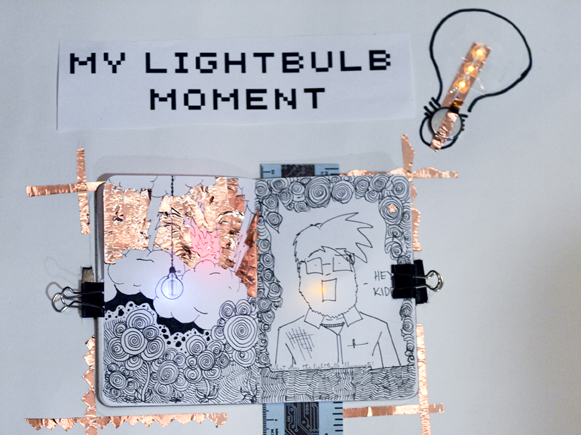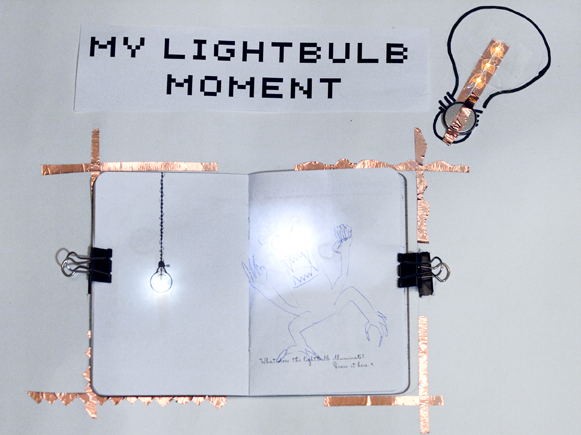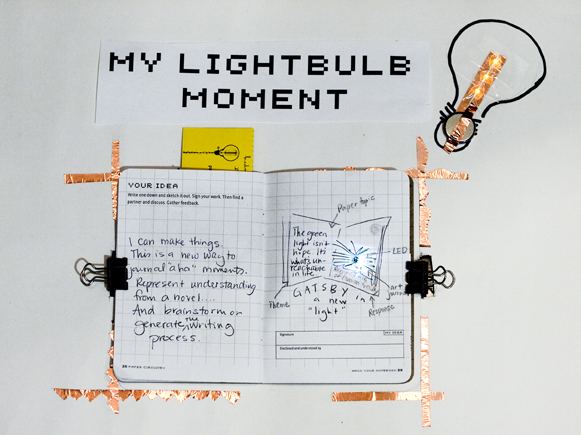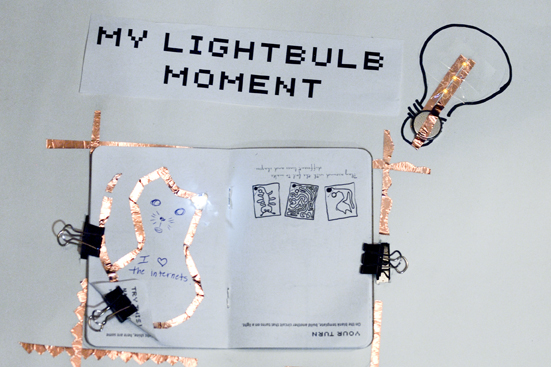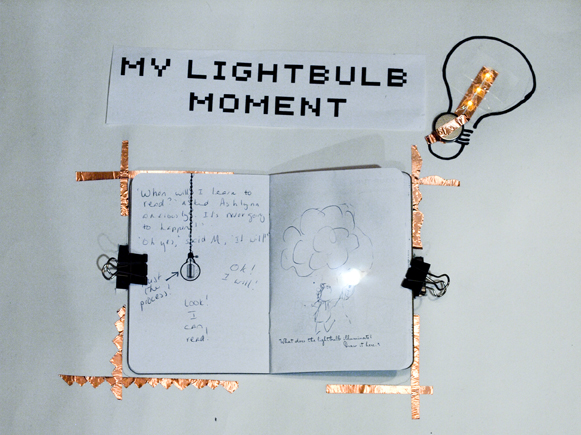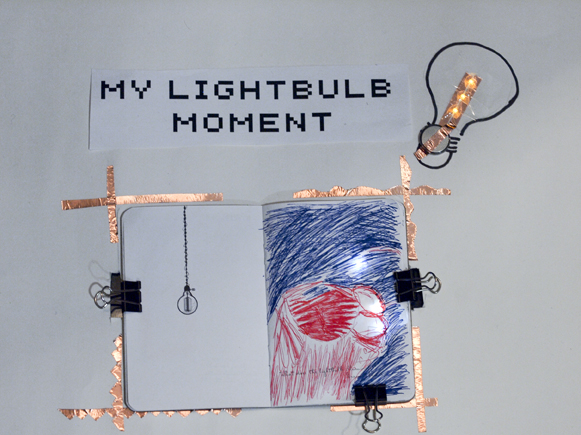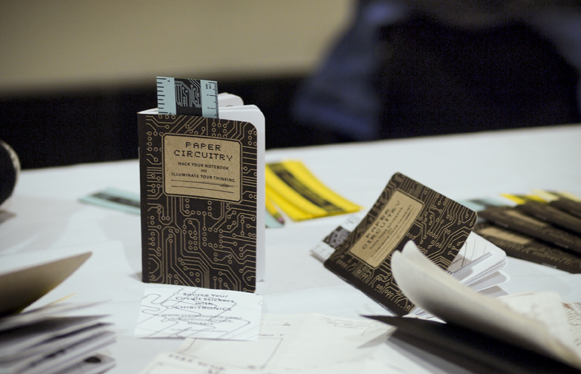In the past few years, the Maker Movement and DIY enthusiasts have become an increasingly visible and vocal segment of the informal education community. The Internet has made it easier than ever to share resources, display projects, and form communities of interest. Classroom teachers are paying attention: a growing number of educators across grade level and subject matter expertise are seeking creative, hands-on learning experiences for their students to help them develop critical thinking and problem-solving skills.
The National Writing Project is a grassroots professional organization dedicated to improving writing and learning for both teachers and students. They’re a remarkable consortium of dedicated educators who constantly seek out new best practices to bring back to their students, so we were really excited when they invited NEXMAP and our collaborator, Jie Qi, to co-present a paper circuitry workshop at their annual meeting in Boston on November 21.
The workshop was packed: 38 people attended our session, Hacking the Storybook. Participants included K-12 classroom teachers, university professors, and Writing Project site directors. We started by discussing how paper circuitry meets the needs of both students teachers from an education policy and theory perspective. With that out of the way, Jie shared some of her artwork—the perfect demonstration of what happens when expressive and technical competence meet.
It’s inspiring, but the reaction is often along the lines of, “That’s lovely, but I could never do that.” But then we take them through an activity and they do make something beautiful and their faces light up.
They are forced to reconsider a concept they interact with constantly—the circuit, in this case—and consider how electricity really works. They collaborate, asking questions, looking at what their neighbors are doing with their circuit design. They try something, and if it doesn’t work, they fiddle with it or ask an expert to take a look. It’s authentic learning demonstrated through a concrete project that inspires them enough to persist in the face of temporary failure. They reflect on the process and their creation and begin to think about what they want to make next.
After about an hour of making time, we reconvened the group to discuss their experiences. Some said it was a wonderful reminder of what it’s like to try to learn something you’re not familiar or comfortable with, that this provided an excellent empathetic touchstone for what their students experience. Others talked about the deep level of engagement they experienced: some people were still working on their circuitry products during the discussion—they didn’t want to stop.
A number of teachers were eager to start planning paper circuitry projects with their students right away. NEXMAP wants to support teachers in the planning and implementation of these projects. Please consider a donation to help us cover the cost of paper circuitry materials and instructional support for our pilot teachers.



